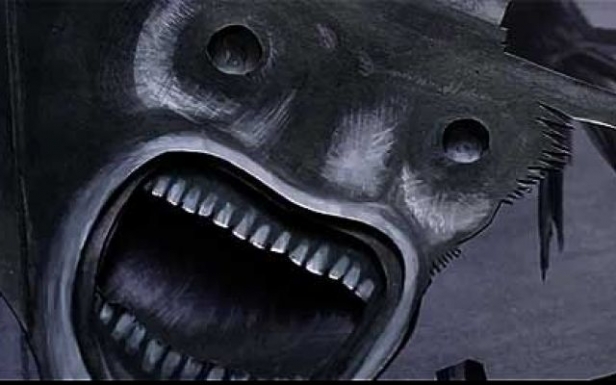There’s something appealing about the idea that a nation has a specific film genre, and few countries can lay claim to such a powerful cinematic identity as Australia. With Ozploitation and Australian Gothic, visions of wreckage-strewn tarmac and oppressively endless desert, killers on the road and spirits in the wilderness, post-colonial shame and fear of nature have been driven into our consciousness. From our remote viewpoint, we have a clear vision of what we think Australian genre cinema looks like.
Recently we’ve seen a few Australian genre films making a huge global impact. Greg McLean’s Wolf Creek made us afraid of the outback again, Jennifer Kent’s The Babadook showed us skin-crawling horror that starts at home, and George Miller’s Max Max: Fury Road reminded us who gave us the post-apocalypse in the first place. There have also been plenty of indie film sensations, such as Sean Byrne’s The Loved Ones, Joseph Sims-Dennett’s Observance, Cameron and Colin Cairne’s 100 Bloody Acres and Kiah Roche-Turner’s Wyrmwood – all incredibly varied and potent genre movies. However, the question of whether or not these films constitute a revival is complicated.
“There’s a lot of interest in Australian genre films internationally, but it’s still an underdeveloped market domestically,” opines Briony Kidd, filmmaker and co-creator of Tasmania’s Stranger With My Face film festival. “I think that’s changing slowly, with more distributors specialising in this area, a growing festival circuit, and with the funding agencies increasingly aware of the specific needs of these filmmakers.”
“While the ‘scene’ from a broader industrial perspective is negligible – the attention of funding bodies in particular has historically privileged more highbrow ‘serious’ festival-friendly art films – filmmakers and creatives involved in making genre films here right now are thriving,” agrees award-winning film writer Alexandra Heller-Nicholas.
The Australian festival circuit is going from strength to strength, with Stranger With My Face, Sydney’s Fantastic Planet, A Night Of Horror, and Underground Film Festival, and Melbourne’s Monster Fest and Underground Film Festival, and more offering opportunities for film lovers and filmmakers, while Sydney Film Festival and Melbourne International Film Festival have a strong genre presence.
Renowned Canadian film scholar Kier-La Janisse has joined the Monster Fest team this year as Festival Director and Head Programmer, and she tells us that there are clear points of comparison in the two nations’ genre movie histories.
“I feel the trajectory in Australia mirrors our own,” she explains. “We had a ‘golden age’ in the Seventies and Eighties that resulted in a glut of exploitation and oddball indie films. Ours was due to the tax shelter, and Australia’s was purportedly due to the founding of the Australian Film Television and Radio School, both situations that set the stage for more active production. A lot of the films that were made were seen as embarrassments by the powers that be. I think this resulted in more conservative mandates about the types of films that could get public funding, and so both countries had a bit of a slump because of this, and a general lack of pride in their national filmmaking. Both countries got a jolt by an exploitation film – in Australia it was Wolf Creek.”
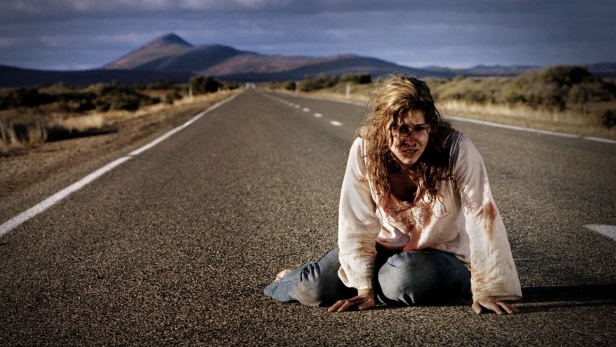
THE ISSUE OF FUNDING
Public funding from institutions like Screen Australia and regional bodies is a crucial element in Australian filmmaking, but gaining their support isn’t always easy for genre filmmakers.
“Traditionally, it’s the be all and end all,” Craig Anderson, writer-director of upcoming horror Red Christmas, tells us. “People hardly make a film here without them, and it’s the first point of call when a filmmaker has an idea. If you want development, then you go to them. Of course, if your idea is not the kind of idea they normally fund, then you usually shut down that idea immediately, like some kind of cultural Pavlovian conditioning.”
“No doubt, a lot of genre projects die a slow death as a result of this dogma, while producers in other markets are likely to have greater success attracting finance based on their commercial potential,” agrees Toby Gibson, producer of upcoming science fiction film Restoration. “That said, I believe the market is beginning to recognize that there’s a clear and growing commercial appetite for sci-fi/genre content in Australia and now is an exciting time for fresh and innovative genre filmmakers hitting the scene.”
“How difficult it is to get government funding?” asks Kidd. “Well, it’s very difficult. But not many people go into filmmaking these days imagining it’s going to be easy or will make them rich. The Producer Offset, which is a 40% tax rebate of feature film budgets over $500,000, is an important part of the picture. It’s dependent on theatrical release and other requirements but it doesn’t assess quality, anyone can theoretically qualify. Incentives like that are especially important to genre filmmaking, because they allow for unusual material to be supported. For example, the 10BA scheme in the 1980s here, which was a big tax incentive, generated a lot of what are now considered cult classics.”
“Screen Australia is hugely important – but one thing we’ve noticed is that the system here doesn’t really reward the entrepreneurial spirit, which is why you sometimes have such a deep chasm between really low-budget indie filmmaking and films that have access to funding that enables them to look professional,” adds Janisse. “In order to access Screen Australia money as an independent filmmaker you have to have a producer that they recognize – and finding those producers is difficult as there aren’t enough of them and they are always busy – and it’s hard for new producers to break in. So it’s the biggest holdback I’ve heard filmmakers here cite as an issue – that there aren’t enough producers. Apparently it is very hard for producers to get that foot in the door, which in turn opens the door for the filmmakers they work with.”
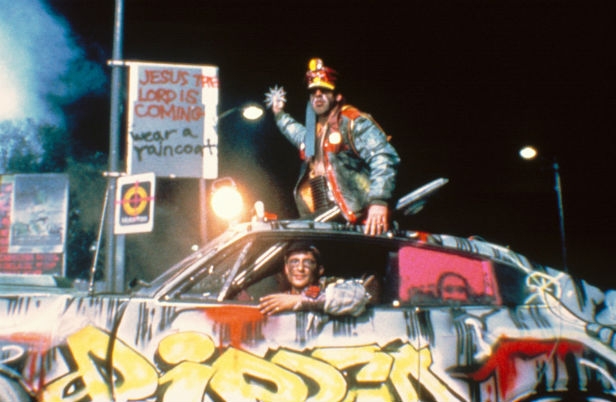
OZPLOITATION LEGACY AND THE LANDSCAPE OF HORROR
The idea of fitting a film into an easily defined box also applies to how these films are seen and understood. Given that we have such a powerful love of Ozploitation classics like Mad Max and Razorback, and Australian Gothic masterpieces like Picnic At Hanging Rock and Wake In Fright, we wonder if they’re still an influence on today’s filmmakers, or if we’re looking for connections that aren’t there.
“There’s no doubt that many Australian filmmakers have been directly affected and/or shaped by the legacy of the Ozploitation era in one way or another,” says Gibson. “Whether they may feel comfortable admitting it or not.”
“The incredible iconography of Mad Max has clearly influenced many Australian sci-fi films,” agrees Restoration director Stuart Willis. “But with Restoration we went for a near-future, urban setting. We live in a science-fiction present, and that feeling is what we wanted to capture. So while we were aware of our forebears, we didn’t feel beholden to their legacy. We’re not exploitation. We belong more in the tradition of Gattaca or Twilight Zone — and it’s only recently with films like The Infinite Man or Predestination that we’re seeing more of those kinds of films made here.”
“Like film noir, Ozploitation was a term retrospectively applied to those particular films: it was never an industrial or commercial term at the time the movies were coming out, and for the most part the bulk of them were done under the 10BA tax window that saw perks for investors who were drawn to cheap, fast filmmaking (and genre was the perfect space for that),” Heller-Nicholas tells us. “But all the Australian horror filmmakers I have met are very literate not just in regards to Australian cinema – genre and beyond – but also international cinema. In my experience, horror filmmakers here tend to know more about these movies than most critics!”
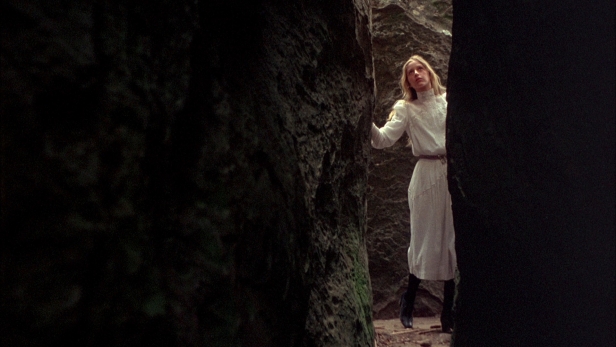
“Critics are always going to look for patterns, so maybe they sometimes make leaps of logic and find connections that are not really there,” opines Kidd. “But filmmakers are not creating in a vacuum. It’s impossible to not be influenced by what you’ve seen and where you’ve grown up. I do believe that horror in particular works well when it’s infused with a strong sense of place.”
Kidd is particularly interested in Tasmanian Gothic, which draws on the region’s specific history, location and landscape, and is becoming an increasingly visible influence on filmmakers. “The Gothic sensibility runs deep in Tasmania,” agrees Janisse.
The landscape is obviously a huge part of what we think of when we think of Australian genre films, and we’re still seeing plenty of filmmakers utilising it to incredible effect, from The Rover to the Wolf Creek saga, but some of the most powerful works of the last few years, such as The Babadook and Observance, brought their ideas indoors.
“In Australia we have a strong tradition of storytelling that engages with the landscape,” Kidd tells us, “And our genre films have reflected that, particularly when it comes to talking about what scares us. I’d speculate then that it’s a sign of maturity to see more films that don’t fit that mould. We’re getting closer to depicting all facets of our identity, not just a few perspectives. Diversity, both in terms of the people who are getting a chance to make films and in terms of the styles and approaches adopted, can only be a good thing.”
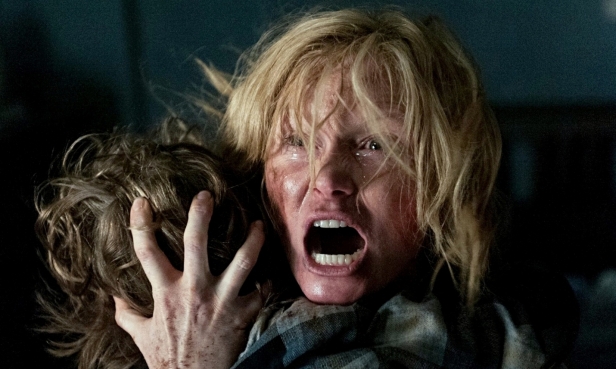
DIVERSE NEW VOICES AND AUSTRALIAN IDENTITY
Stranger With My Face has a particular focus on women directors, and Heller-Nicholas tells us that it’s an exciting time for women filmmakers. “I know that the quality and diversity of the films women are making here is extraordinary – as not just a woman Australian critic but a horror film fan, I’m very, very proud of this!” she enthuses. “It’s worth noting this is not new, however: in the excitement surrounding The Babadook, a lot of people forgot the earlier genre films made by women, particularly Tracy Moffatt’s beDevil (which is, as far as I know, the only horror anthology made wholly by a single woman director) and Ann Turner’s Celia, which was a direct influence on The Babadook in its story about a child becoming obsessed by a scary storybook that comes to life.”
“The situation for women directors in Australia is comparable to in the United States at the indie level (most of our production is at that budget level),” adds Kidd. “Women are better represented in other roles but when it comes to directing feature films, the percentage remains low at about 16 %. A raft of measures to counteract that has just been brought in by Screen Australia, so let’s hope that can finally start to shift things in the right direction. ”
And to suggest that these films are somehow less concerned with national identity and national issues would be a grievous error, as Heller-Nicholas explains. “I very strongly believe The Babadook and Observance – with their focus on domestic violence in particular, which has reached epidemic proportions here and is verging on a national emergency – have more to say about contemporary Australia than the seemingly endless parade of more highbrow, earnest material that gets the funding/accolades here,” she tells us.
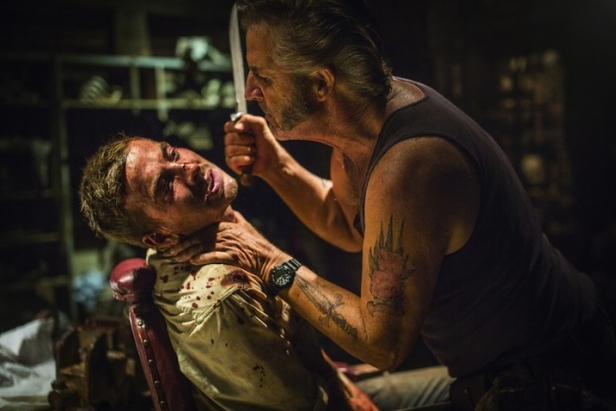
POLITICAL COMMENTARY AND CRITICAL REACTION
Those two films are hardly alone in addressing concerns about contemporary Australia. While Wolf Creek 2 was brimming with references to Australian cinema classics, it was also a fierce social and political critique in slasher-movie wrapping paper. However, two prominent Australian critics simply refused to review the film. “It infuriates me that to critics overseas [the commentary] was so obvious, but so few critics here made that connection!” Heller-Nicholas tells us.
“I believe it was a scathing indictment on white Australia’s rampant, increasing and unchecked xenophobia. Few critics here looked for any kind of subtext, even though it was quite explicit. What the Australian government is doing to asylum seekers on Nauru and Manus Island is something that horror is perfectly situated to critique and explore, and that it was so broadly ignored by critics here I think is representative of the old fashioned highbrow/lowbrow distinction that we should have grown out of a long time ago.”
One film that was universally loved was George Miller’s Mad Max: Fury Road, which may have been funded by Warner Bros, but is undoubtedly Australian. And while it rightly drew plaudits for its critique of our patriarchal society’s treatment of women, Heller-Nicholas tells us that there is there is another important level of commentary that is aimed squarely at its home nation.
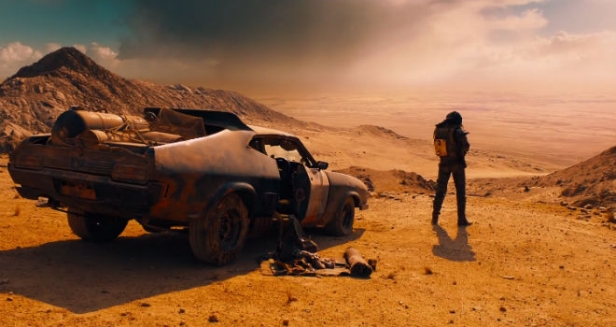
“Absolutely,” she tells us. “Fury Road is fundamentally Australian, and its precise not-Australianness in fact feeds directly into a very crucial aspect of disenfranchised white national identity here right now, linked to a deep, defining shame of Australia’s violent past and violent present. The label ‘un-Australian’ has very specific social potency, and has been used by politicians as an attack; a kind of accusation of cultural treason. For this reason, many of us here have embraced it, even pride ourselves on it.”
The film’s international cast is key to this message. “It is cast by a range of actors from colonial backgrounds (South Africa, Australia, New Zealand), and the British ‘hero’ is effectively made redundant is a potent political statement in itself,” Heller-Nicholas continues. “That Max (a white man very much representative of colonial power) has a dream at the start of the film where an Indigenous man accuses him for the state of the world that the film is set in (a world where there are no Indigenous people) is very telling. For me, Fury Road is not just dystopian, but explicitly post-genocidal.”
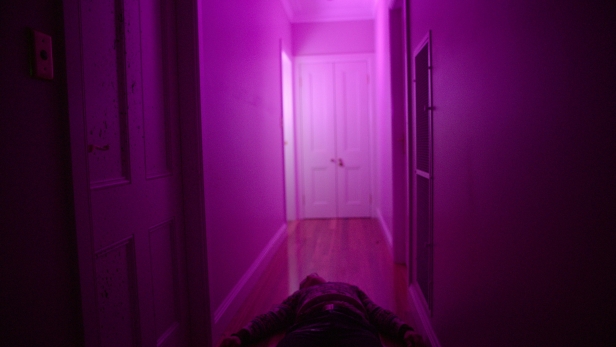
The idea that these films are perhaps not being given the recognition they deserve for addressing these vital issues is troubling, and also a little confusing given that this is what Australian cinema has been doing for decades.
“Just about every Aussie film attempts to address the ‘empty’ and often misunderstood landscape,” explains Anderson. “There are so many colonial Aussie films that stare into our red void and tentatively shrug back, and our inappropriate relationship with the fauna is reflected in films like Long Weekend, Razorback and Matilda The Boxing Kangaroo. We also have a mixed relationship with crime – we know it’s transgressive, but we also think that being a grubby rule-breaker is heroic.”
“On a personal level, I chose to make a film about abortion,” he continues. “It’s not such a big issue here, but it could be. Conservatism is always waiting around the corner, and although hot topics in Australia include immigration and national security, little freedoms and beliefs are easily taken away when people are scared. Reproductive rights, privacy, disability services, cultural funding are all things that can easily be taken by conservatives when riding a wave of fear.”

THE FUTURE OF AUSTRALIAN GENRE CINEMA
For Anderson, the legacy of genre tradition is starting to feel like a set of restrictions. “Now, I feel like we are kind of like a record skipping backwards,” he continues, “Generating new films, but still thematically addressing them in the same way with the same assumptions, tone and style. Perhaps that is what defines our filmmaking, or maybe we’re stuck in an enforced cultural quandary, held back by the aging funding bodies.”
However, for all the frustration, there is so much promise. With festivals celebrating new Australian filmmakers and dedicating projects to helping young talent, there does seem to be a feeling that the genre community is growing and strengthening.
“Ozploitation fills me with hope and pride, that as a country we can make bold and exciting stories that connect with audiences,” Anderson continues. “At the moment our films connect with 2% of the nation, but whenever I talk to people who like Aussie films they always quote exciting and exhubrant genre films that we don’t make enough of.”
“Genre used to be a dirty word here,” Willis tells us. “But that’s begun to fade. There’s still work to be done. The phrase ‘elevated genre’ gets thrown around a lot, and most of the time I think people use it to mean to genre films that you can talk about at dinner parties or not be embarrassed that you helped finance. Genre can and should be more than that. If we ever get James Wan making a horror film in Australia then I’d be really happy!”
“I have seen horror filmmakers go out of their way to provide advice, networking leads and other vital information to each other in a really supportive spirit,’ Heller-Nicholas adds. “There is certainly an upswing,” agrees Janisse. “I think festivals like Monster Fest and Stranger With My Face are big instigators of that – or at least motivating factors – combined with the success of films like The Babadook, Mark Hartley’s films, and powerhouse genre writers like Alexandra Heller-Nicholas fuelling things further. There’s definitely a lot going on, and you can feel that it’s gonna get even bigger.”
Monster Fest runs from 24-27 November in Melbourne. Visit www.monsterfest.au for more details. For more details about Stranger With My Face, visit www.strangerwithmyface.com. Read more of Alexandra Heller-Nicholas’ work here. Craig Anderson’s Red Christmas will play at Horror Channel FrightFest on 29 August and you can find tickets here. For more information on Stuart Willis’ Restoration, visit www.restorationfilm.com
Thank you to Briony Kidd, Alexandra Heller-Nicholas, Kier-La Janisse, Craig Anderson, Stuart Willis, Toby Gibson and Kaila Hier for their help and contributions to this feature.
